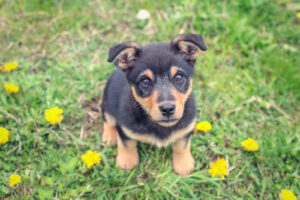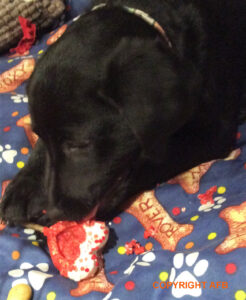Barks Blog
Food – Just Cupboard Love?
The Power of Motivation

As a behaviour consultant meeting with clients who are seeking to alter their dog’s behaviour, I am always asking owners to think about their dog’s motivation – what is it for that individual dog that will assist in initiating positive change and creating a more appropriate response?
Motivation is Individual
There is an important word in the paragraph above – individual.
I mentioned the word ‘motivation’ in the opening sentence. For many dogs, food such as dog treats, chicken, ham, sausage etc. will be a strong motivator, principally because food is essential to survival. Some dogs, however, are completely and not so interested in food and we have to be incredibly inventive when determining what motivates them.

‘Using Food is Just Bribing’
I have heard this so many times and it cannot be more wrong! Food is used as a highly desirable motivational gain or reward which the dog will strive to work for – it is a positive reinforcer of behaviour. Using food in behaviour modification or training actually makes the dog feel happy! This is due to activation of the pleasure centre (limbic system) in the brain. If the dog is stimulated with something it likes (food in this example), it will be motivated to keep performing that behaviour. This means that by using food, every training or behaviour modification technique you are using is creating positive emotions for the dog (you have a happy dog!). This is the huge difference between techniques based upon positive reinforcement and those based upon aversive methods and punishment such as bullying, physical domination or manhandling which only provide results via conditioned stress and fear (you have a sad dog!).
Types of Food and Food Value
It’s no good giving your dog a great big gobstopper! Choose something which is easily digestible and chop it into small, bite-sized pieces. Think about your dog’s superior olfactory senses and choose a stronger smelling treat if you’re outside with competing distractions and also think about your dog’s waistline – you may need to cut back on his normal food ration.
I often talk about ‘food value’. What I mean here is a scale of yumminess from 1 – edible but not worth raiding the pocket for to 5 – hell yes it’s worth hunting the whole car down for those treats!….& somewhere in between. What I normally do is start with very small pieces of food at grade 5 (which will normally be human food; chicken, ham, sausage) and work down the scale as work with the dog progresses. Treats at grade 1 may be kibble the dog already enjoys for breakfast/dinner. Bear in mind that all dogs are different. To some dogs, your kibble may be a grade 5 level reward….this just demonstrates that you should never have a ‘one size fits all’ modification plan.
On the ‘flip side’, some dogs will go crazy wild for food, making them overly aroused. In these cases, I will tend to de-value the food and go to rank 0 on the scale of yumminess. I might use something very bland like toast for instance for an initial period of learning and then seek to phase out rather quickly.
How Long to Use Food
No one wants a flabby Fido, but there are other important reasons why food should be phased out:
Your dog can become satiated – In effect, when you overuse a primary reinforcer such as food, he can have too much of a good thing. Your dog can stop responding as well as he once did. This is why it’s important to vary how we reward the dog as he learns. In the period of learning, your dog’s behaviour is placed on an acquisition schedule and when it is well learned, it shifts to a maintenance schedule, where it will extinguish if not reinforced. When your dog is first learning new cues (acquisition phase), we will treat him every time he performs what we ask – a continuous reinforcement schedule. However after this maintenance phase, there is no need to reinforce every time, in fact the response rate will be stronger. We may choose a different ratio of reinforcement to still give us a good rate of response; treat after a varied number of sits for instance or treat for the first sit after a specific period of time has elapsed etc. This enables us to cut back on treats, still have a good response rate and prevents satiation to the food and the cue from becoming extinct over time.
‘My Dog Won’t Take Treats!’
I often hear from owners that their dog doesn’t like treats or isn’t food motivated. True, for some dogs, food just doesn’t get them going and we’ll look at this in a moment, but are there other reasons why a dog just might not respond to food as a source of motivational reward?
He’s above ‘threshold’ – What is meant here is that there is something else going on in the dog’s world that is totally more exciting than gobbling up that tasty treat! You have competing distractions to whatever it is you are trying to do with your dog. It is a matter of reducing these competing distractions by training in a tiered gradient and generalizing the experience to gradually increasingly distracting environments. Remember that whilst you might not be able to see something around you, your dog will be able to hear and smell lots of lovely things which will compete for his attention above you and your food. You may be able to remediate the issue by reducing the environmental distractions and/or increasing food value.
Take his breed into account – Many people fail to account for the obvious – their dog’s breed or breed type. Gundogs WILL be nose driven, greyhounds WILL be sight driven etc. This IS normal! and we have to work within these remits.
Is he stressed? – You might not think so, but consider the specific circumstances you are in – is there anything in the environment around you that could be stressing your dog out? Sensory stimuli, presence of other dogs & people/physical location and ambience etc. Be aware of your dog’s body language and subtle symptoms of stress.
Other Sources of Motivational Reward
Some dogs are truly unimpressed by food. In these cases we have to look at alternatives and be creative. I will tend to use innate breed characteristics as a clue and be led by that. A few ideas I use:
Play – incorporating lots of different types such as chase, throw & fetch, hide & seek, find it, tug.
Praise – most dogs simply love to please and be told they are a ‘good dog’. Lots of different intonation works well.
Flirt Poles – great for dogs who love to chase and high energy breeds.
Scent Sticks – let the dog choose the scent they love as some can be aversive to some individuals. The chosen scent is offered as a reward. Great for gundog breeds.
Lure Chase – Great for high drive dogs such as sight hounds
The most important thing to remember is that behaviour change should always been instigated in a positive and fun way for the dog and that all dogs are driven by something and it is up to us to find out what that is if its not obvious.
